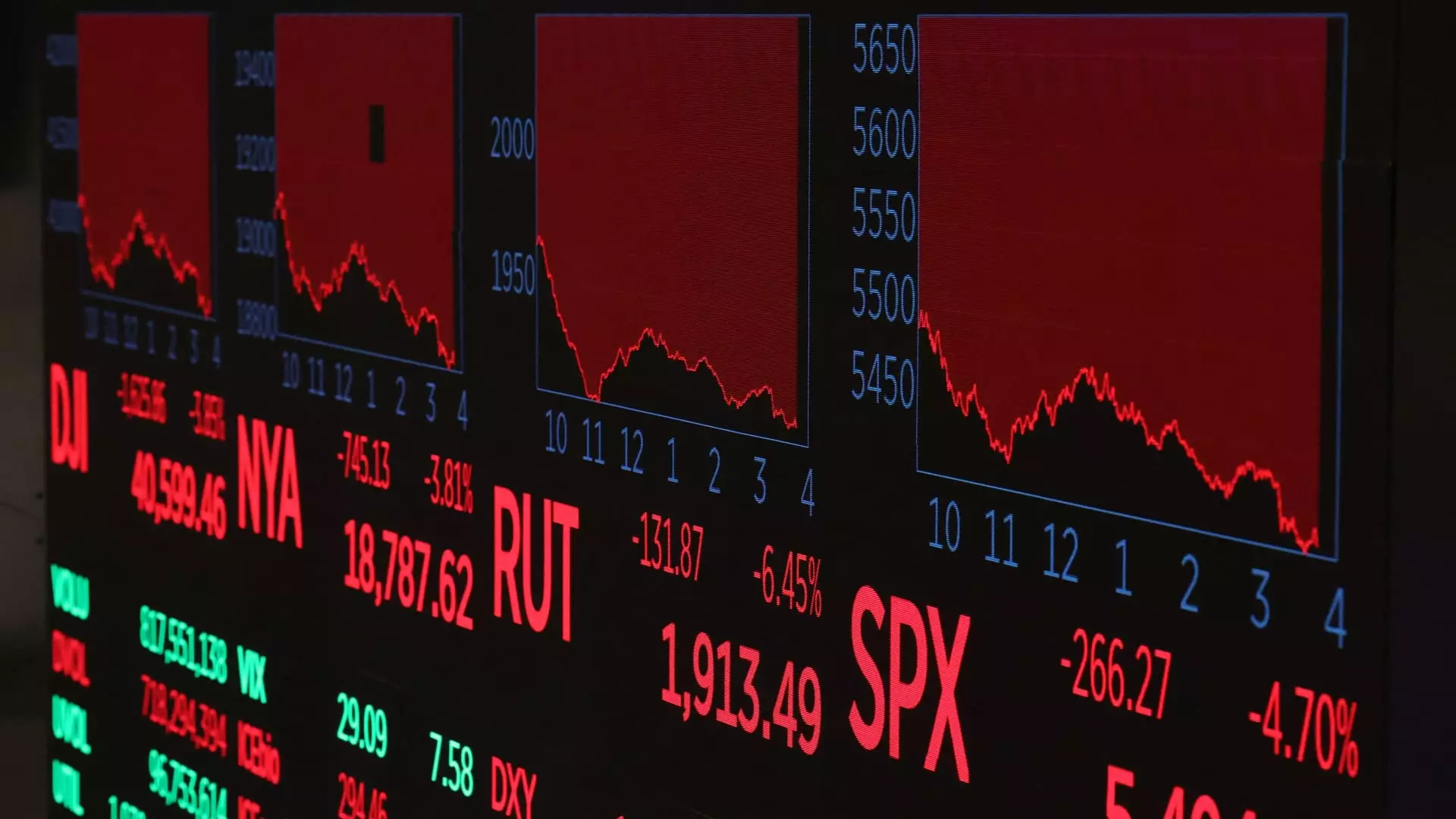As financial markets experienced a whirlwind of fluctuations in response to President Trump’s rollercoaster tariff plans, something remarkable happened: everyday investors stepped boldly into the fray. Most analysts braced for chaos, anticipating that heightened uncertainty would cause retail investors to retreat in fear. Surprisingly, many turned rather courageously towards opportunity, embodying a unique mix of audacity and strategic insight. They exhibited a classic example of contrarian investing, throwing caution to the wind and capitalizing on perceived discounts in the stock market.
Take Rachel Hazit, a 32-year-old marketer from Philadelphia who dove headfirst into equities like the Vanguard S&P 500 ETF and the Invesco Nasdaq 100 ETF at the height of market fears. Unlike risk-averse institutional investors who fled the scene, Hazit’s sentiment echoes the mentality of seasoned investors who understand that market downturns can often present golden opportunities. She characterized the market’s decline as a “sale,” a refreshing perspective that diverged sharply from the prevailing panic. This is indicative of a budding movement among individual investors who are undeterred by macroeconomic risks and are instead honing in on long-term asset accumulation strategies.
Buying the Dip: A Retail Revolution
The phrase “buying the dip” has gained traction among retail investors, serving as a rallying cry during periods of market turmoil. Following the initial announcement of Trump’s tariff plans, which sent market indices plummeting, retail investors reported a remarkable $3 billion net influx into U.S. stocks—a record figure that starkly contrasted with institutional sell-offs. This juxtaposition illuminates a critical shift in the market; what once was territory dominated by institutional giants now sees a significant influx from the retail sector, challenging the traditional narrative that depicts retail investors as emotional and reactionary.
Recent data from Vanda Research bolsters this narrative, illustrating that despite significant bear market territories triggering investor anxiety, retail investors continued their bullish behavior, with approximately $8.8 billion in net inflows across just a few turbulent days. While large players retreated, the mom-and-pop investors demonstrated resilience, buoyed by a belief in the long-term recovery of the stock market. Their collective confidence suggests a renewed belief in American economic fundamentals amidst fears of recession.
Volatility as a Catalyst for Opportunity
Amidst the backdrop of heightened volatility—indicated by peaks in the CBOE Volatility Index, known as the “fear gauge”—these retail investors continued to push money into equities. This is counterintuitive behavior, as one might expect most individuals to recoil from active trading during such uncertain times. While other institutional investors braced for uncertainty, many retail traders displayed an uncommon optimism that speaks volumes about their confidence in the market’s eventual rebound.
However, one cannot ignore the significant risks that accompany such moves. The current market climate holds the potential for severe downturns, and retail investors buying into equities during this period may be exposing themselves to heightened volatility. The analysis presented indicates a disconnect between the bravado exhibited by retail traders and the serious economic undercurrents that may lead to greater instability.
The Long-Term Perspective: A Double-Edged Sword
One notable trend among savvy retail investors is the preference for diversified exchange-traded funds (ETFs) over individual stock picking. This indicates a collective understanding among traders that long-term success often lies in stable, diversified investments, rather than high-risk gambles on single stocks. The inclination toward broad market indices, such as those offered by Vanguard and State Street, signifies a shift toward more prudent investing strategies—emphasizing a foundation of accountability rather than speculation.
Many retail investors maintain a long-term perspective, especially those who have nurtured their investing habits over years. There’s something refreshing about this pragmatic outlook in a world often saturated with volatile temperament. Whether they are new to investing or seasoned hands like Namaan Mian, whose investment journey began in his teens, they are collectively signaling a shift towards maturity in retail trading.
The Current Economic Landscape: Navigating Challenges
That said, the backdrop of declining consumer confidence looms large, raising questions about the sustainability of this daring approach. Even enthusiastic investors are quietly uncertain about the potential ramifications of fiscal policy changes on their purchasing power. Trade tariffs that once seemed a distant concern now complicate future financial planning for ordinary consumers. The complexities of navigating these economic waters require not only bravado but also informed decision-making and a grounding in economic realities.
The forthcoming fiscal year could prove challenging, as individuals like Hazit grapple with the implications of their investment strategies while considering the probability of a recession. A looming economic downturn adds an additional layer of complexity to the current narrative, reminding investors that courage does not negate the necessity of prudence. In a climate rife with noise and uncertainty, the strategies employed by everyday traders showcase a refreshing approach to navigating tumultuous waters while simultaneously acknowledging the very real factors at play in the broader economy.

